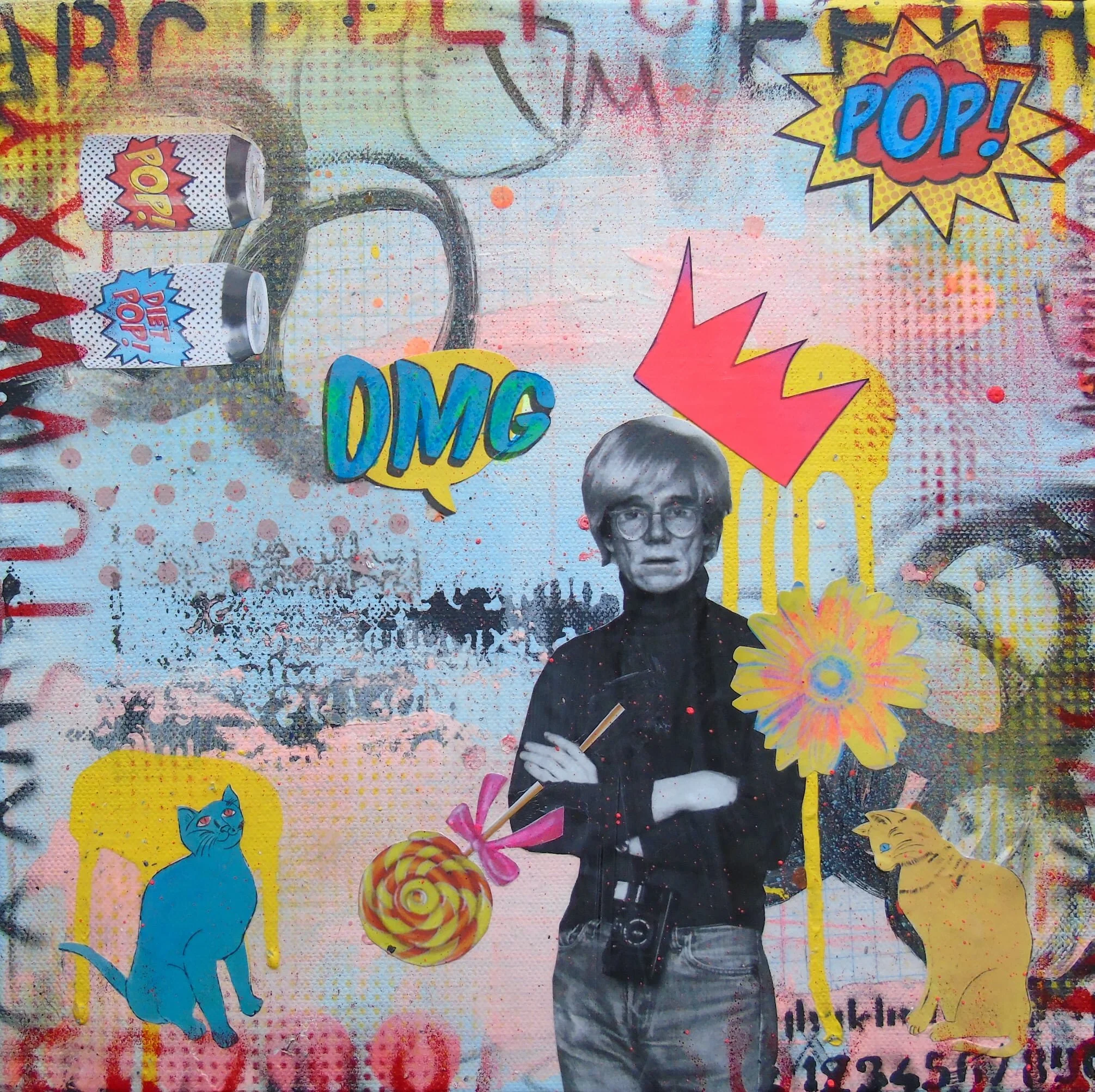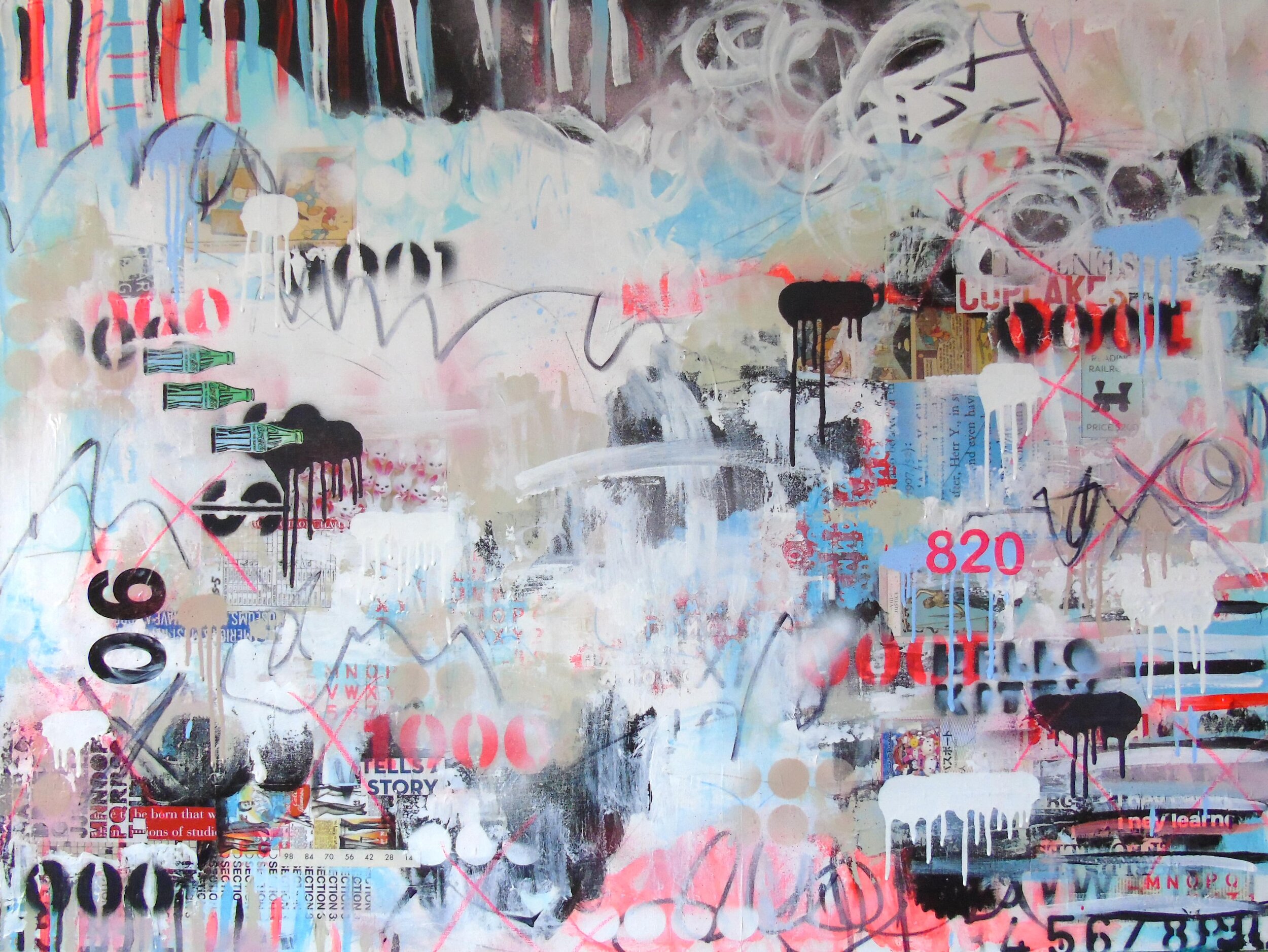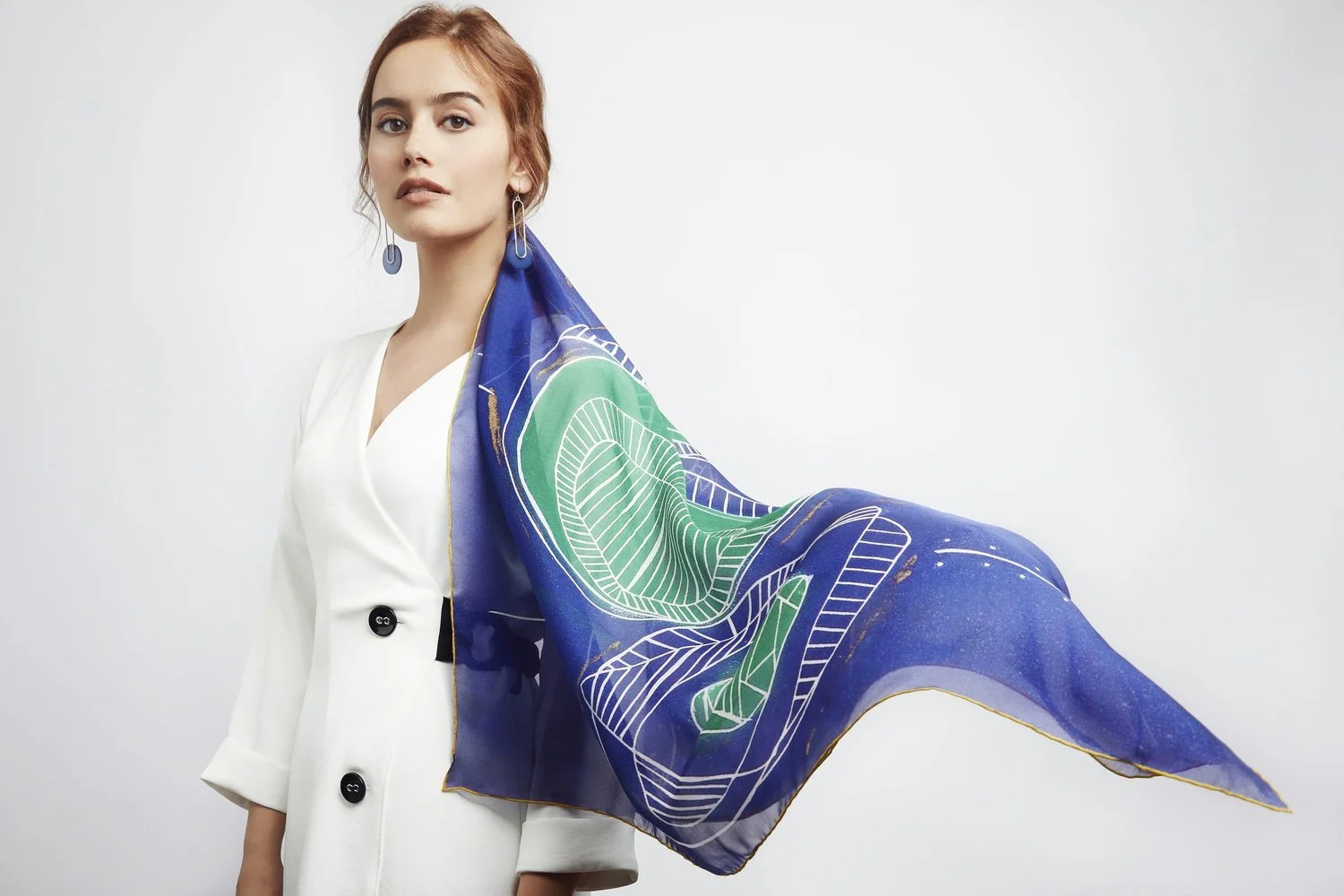10 Questions with Lorette C. Luzajic
Lorette C. Luzajic is an award-winning collage and mixed media artist whose works have been collected in at least 25 countries. Her art has been exhibited in galleries, museums, banks, hotels, nightclubs, on a billboard in New Orleans, in dozens of arts and literary journals, in an ad campaign for Madrid-based jewelry company Carrera y Carrera, and as a prop on the set of the upcoming film 1Up, starring Elliot Page. She has traveled to Tunisia to work with international artists at a symposium there and exhibit her work, and to Mexico for exhibitions with an artist in Merida, Yucatan. Her work is driven by eclectic curiosity and inspired by literature, art history, travel, urban life, mystery, humor, and an expansive view of beauty. Lorette also facilitates mixed media workshops for clients living with mental illness. She is also the founder and editor of The Ekphrastic Review, a journal devoted to writing inspired by art and a widely published writer of poetry and small fiction.
ARTIST STATEMENT
"Every technical and philosophical facet of my art is committed to the application of mixed media, redefining the term to include concepts and ideas as well as tangible physical materials. This cross-genre pasticcio is born from and dependent on collage, which naturally experiments with subliminality, intercontextuality, and the unexpected narratives that emerge from both playful and planned juxtapositions.
Each work is assembled from an unlimited assortment of tools, themes, genres, and inspirations. A work may be created from acrylic paint, gouache, found papers, chalk pastels, oil sticks, wax crayons, graphite, spray paint, poetry, overheard dialogue, religious ritual, music, mythology, television, and etymology.
My expression springs from my insatiable curiosity, bent humor, the intersection of the sacred and inane, and enchantment with the fruits of human innovation and creativity. To this end, an ongoing lifelong study of visual art history, the arts, and the humanities, is essential to my work.
From serene, minimalist abstractions to frantic pentimenti imbroglio, my work embraces appropriation and challenges constructs of the genre, color orthodoxy, and technical craftsmanship. But the traditional importance of beauty in millennia of art history is a conviction I share. To obtain beauty in every work, I strive to evoke emotion, achieve mastery of composition and discover new ways of seeing and defining what is beautiful." - Lorette C. Luzajic
Cat Love, Mixed media on canvas, 30x40 inches, 2021. Lorette C. Luzajic©
Limited edition art collectors’ book
INTERVIEW
Could you tell us a little more about your background? Why are you an artist, and when did you first become one?
I have always been creative, and this manifested in different ways. I was sure about poetry and started writing very early. I started sending my poetry and stories out into the world quite confidently before I turned twelve! I got a lot of rejection letters, but I also started getting published. I enjoyed making art of all kinds but was more interested in looking at art. I started visiting galleries very early, and as a teen, went on a museum trip to New York City. I was so moved by the variety of art from all times and from different cultures. It seemed to be the most authentic way to learn about the world, not just dates and wars and kings, but real life- the big and small events in the lives of all kinds of people. I was reading about artists and their work, and I didn’t have a particular urge to be an artist myself. I saw myself as a writer, and I loved to write about art. I enjoyed making different things like beadwork, clay sculptures, sketching, etc, but I saw this as a hobby.
I chose to study journalism at university so that I could do something practical with my writing. But it was a disaster for me, really. I was a profoundly sensitive person and not very competitive, and hard news is all about trauma or politics, with no room for creative writing at all. I stuck it out and went to stay with a friend who lived by the ocean to unwind after the ordeal. There was a huge stack of old magazines there, and I started to cut them up to make some collages to relax. I loved making them and started collecting more papers to cut up at thrift shops. Quite a few people commented on my little collages, and I thought that making collages would be more interesting and less stressful than a newsroom. When I sold a couple of little pieces, I got the crazy idea that it would be easy to sell them if I made them. Becoming an artist was an accident, but of course, it wasn’t. It was part of my fate, and I just didn’t know it until then.
Don't You Want Some Bunnies to Love?, Mixed media on canvas, 30x40 inches, 2020. Lorette C. Luzajic©
What is your personal aim as an artist?
I want to show people that it's all right in front of them. Beauty is everywhere; amusement is everywhere; magic is everywhere, even when it seems chaotic or painful. The darkest nights of the soul are an integral part of life, with their own terrible beauty. I want to remind people that they are front row center to the greatest show on earth. Just look around.
In your opinion, what role does the artist have in society?
None, and many. Artists' roles range from parent to mechanic to a poet to a farmer. There is no one definition or expectation that I hold to be true. One artist may feel called to express a spiritual truth or petition for political freedom. Another may simply want to play with the different ways light falls on a stack of hay.
Your work is a juxtaposition of different media and a varied series of religious rituals, music influences, mythology, television culture, and so on. What is your creative process like, and how do you incorporate such different elements in it?
I'm driven by eclectic curiosity. I want to know everything and to experience it first-hand. I'm enchanted by creativity and the human imagination, and my work borrows ideas and themes from all of the arts, including music and painting, poetry and literature, religion, pop culture, and the cities I fall in love with. The human imagination seems to me unlimited, and there's a profound sense of mystery and magic to life that infuses my work because of that. As a collagist, I like to say that the whole world is my palette, and I take that quite literally.
Most of my works begin with a spark, a very specific or small idea or prompt that I sometimes call "the seed." It might be a color contrast on a t-shirt or a found word in an advertisement. It could be anything. That is where it starts, and then I start to build around it. I rummage in my paint drawers or pastels or image piles to find a color or catalog clipping that would be interesting concerning the spark. It might be a thematic connection or an aesthetic one. It could be anything. As my creative energy starts to build, I add and subtract elements, sometimes in a bit of a frenzy. If something isn't moving, I move on, connect with another work in progress, and go back to it later. I work on multiple pieces at the same time.
Sometimes there is quite a bit of planning. If I'm working on a specific theme or intention, I will read stories, listen to songs on that theme, look at paintings from history that addressed that subject, and take everything in. I will start collecting images and words and ideas in a notebook and in a stack, putting phrases, postcards, old photos, magazine cut-outs together, whatever I might build with.
Other times, I have no idea where the spark will take me, and I let chance lead the way.
Andy Pop, Mixed media on canvas, 12x12 inches, 2020. Lorette C. Luzajic©
In Chess, Even Legendary Masters are Still Beginners, Mixed media on canvas, 48x48 inches, 2017. Lorette C. Luzajic©
What does collage represent for you and your work? Why did you choose this technique, and how does it influence your art practice?
Collage is the key to 95 percent of my work- it's the backbone, even if it's minimalist or abstract. That's because I am always looking, collecting, sorting, culling, juxtaposing everywhere I go. The time between studio sessions is just as important as putting the paint and pictures together because I'm incubating, processing, examining everything I see. It could be beautiful flowers in a garden, or a phrase inside a poem I'm reading, or a conversation snippet overheard, or a vintage calendar at a rummage sale- I'm always cutting out these moments of curiosity and saving them. Images are easily collected, but I'm also jotting down notes to collect the ideas and conversations.
My whole apartment is my studio- it's a giant library, for one thing, and a museum of interesting objects I collect on my travels to thrift stores or abroad. I'm mesmerized by incongruity, by juxtaposing unlikely elements that nevertheless have a relationship with one another. Collecting words and phrases and images for my collage is part of the eventual work, even when many saved catalogs or resources are discarded to make room for others.
I'm always reading poetry, and I'm always looking at art, obsessively, any kind and every kind. My work is about me, of course, it is, but it's really about dissecting the chaos into details and examining them closely, about seeing how all the pieces swirl and crash together to make this beautiful, absurd, divine, moving, brilliant, heart-breaking, world.
Where do you find inspiration?
The creativity of other people is literally the heartbeat of my own. I'm moved by the stories of interesting people and by what they make and do. Everyone I've encountered in person or concept has a place on my list of inspirations!
Art history is very important to me: discovering Joseph Cornell's assemblage boxes was a revelation. I immediately knew that he shared my curiosity and enchantment about special objects and moments. He collected collage material obsessively and meticulously, far more than my free-flowing system. Antoni Tapies and Robert Motherwell both seemed to "write poetry" with their gestural, textured, abstract collage paintings. The crossover between poetry and art there really validated that intersection for me. I love Van Gogh's heart and how he drank everything in. And
Magritte relentlessly mined the world for symbols and placed them in dreams, bubbling up the way our unconscious jiggles them randomly together- then he rejected any symbolic interpretation whatsoever and called his work poetry instead. I loved this assertion that not everything can be solved or figured out.
After art, my inspiration comes from poetry and literature. As a writer and editor as well, I am constantly immersed in words and stories. Music inspires my rhythms. Cinema is an influence. I love learning about different cultures, often through art history and through travel.
Nothing Fails, Mixed media on canvas, 12x12 inches, 2020. Lorette C. Luzajic©
You Are Here, Mixed media on canvas, 48x48 inches, 2021. Lorette C. Luzajic©
What do you hope that the public takes away from your work?
I want it to inspire them to feel the same curiosity that I feel, and explore the world around them.
You have traveled and exhibited extensively throughout the world. What is your most treasured memory as an artist?
In 2017, I was invited to participate in an international symposium of contemporary art in Tunisia, where I spent two weeks painting with many artists I admired already, and meeting new ones. I am profoundly moved by the work of Dutch-Iraqi painter Ali Rashid, and it was because of him that I went. I was taking in the amazing beauty of North Africa, walking with him along the beach, beside the orange groves, with camels sauntering past along the water. I could see that I was the least experienced artist in the group, and I’m a candid person who always wants to learn, so I asked him this. Ali, I am the baby of this group. How did it happen that you chose to invite me? Ali said to me, “Because you are ready to launch.” I promptly burst into tears. That was my moment, and I have never looked back.
What are you working on now, and what are your plans for the future?
I’m working on some uncharacteristically simple, more minimalist-abstract pieces than my usually busy and overflowing pictures. I don’t know where this will go, if anywhere- aesthetically, I don’t feel they are “there” yet. I’m working on more small squares in tribute to writers, artists, and other icons. I’m also working on a collection of short stories and prose poems inspired by painters.
Essential Cupcakes, Mixed media on canvas, 36x48 inches, 2020. Lorette C. Luzajic©
We're in 2021; tell us your feelings.
I have tried very hard throughout the pandemic to remain positive and see things in perspective: there have always been enormous challenges and crises for humanity to contend with. We have always experienced terrible disease, poverty, and crime. I am lucky to have a roof over my head and loved ones who care.
That said, my outlook is growing grimmer as time goes by. I am afraid for the world and all the people without work, for people getting sick.
I am thankful that technology has provided a way for us to connect to each other, from different houses, from different countries. It is how we can stay together moving forward, no matter what happens.






















